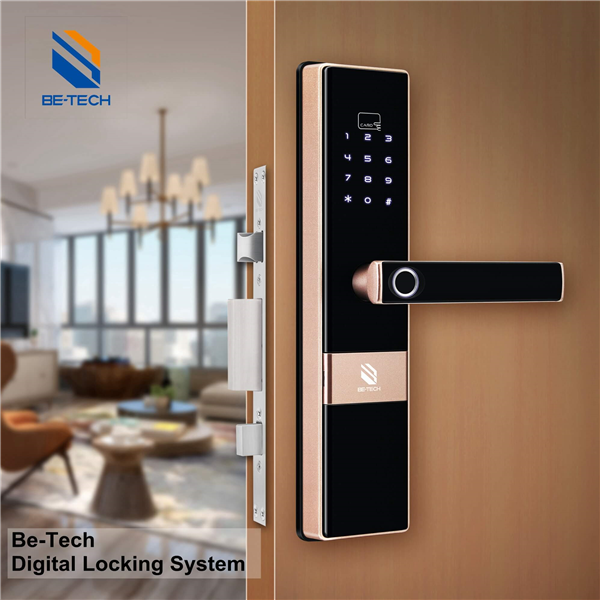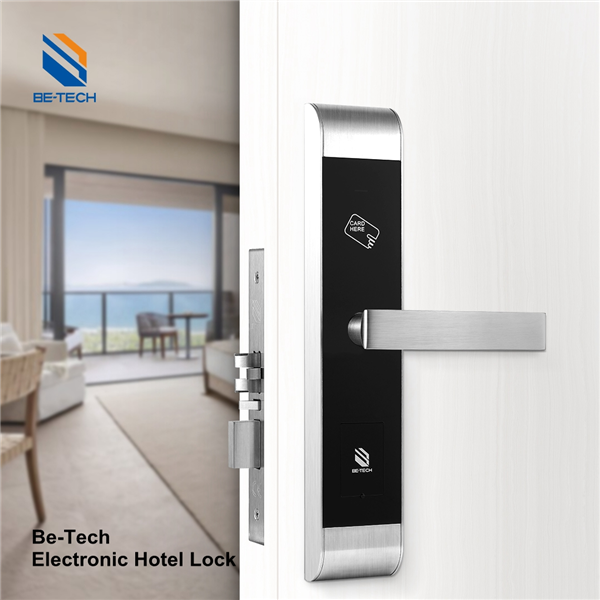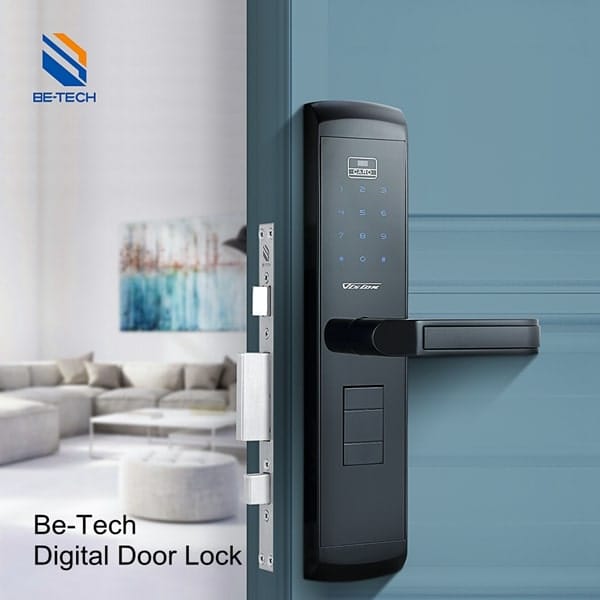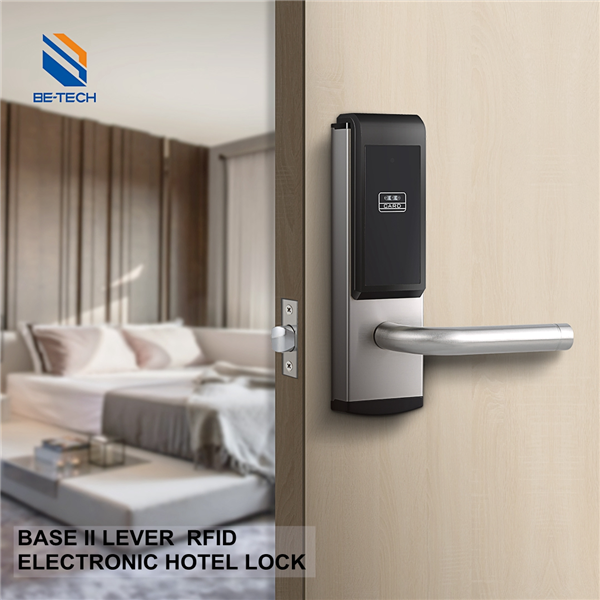In an era where security concerns are paramount, technology continues to evolve, offering innovative solutions to age-old problems. Among these advancements, biometric fingerprint door locks with automatic locking capabilities have emerged as a pinnacle of high-end security for both residential and commercial applications. These sophisticated devices combine the uniqueness of human biometrics with cutting-edge technology to provide unparalleled protection and convenience.
Understanding Biometric Fingerprint Door Locks
Biometric fingerprint door locks are advanced security devices that use an individual’s unique biological characteristics—specifically, their fingerprints—to control access to a protected area. Unlike traditional locks that rely on physical keys or numerical codes, these systems leverage the distinctiveness of human fingerprints to ensure that only authorized individuals can gain entry.
The core component of these locks is a biometric scanner capable of reading and analyzing fingerprints. This scanner is typically integrated into a sleek, modern lock design that can be installed on various types of doors, from residential front doors to high-security areas in commercial buildings.
The operation of biometric fingerprint door locks is based on a sophisticated process that combines hardware and software technologies:
- Fingerprint Acquisition: When a user places their finger on the scanner, the device captures a detailed image of the fingerprint using sensors.
- Image Processing: The captured image is then processed and enhanced to ensure clarity and detail.
- Feature Extraction: The system analyzes the processed image to identify unique features of the fingerprint, such as ridge endings, bifurcations, and the overall pattern.
- Template Storage: For authorized users, their fingerprint templates are securely stored in the lock’s memory or a connected database.
- Matching Process: When someone attempts to unlock the door, their fingerprint is scanned and compared against the stored templates.
- Access Decision: If a match is found, the lock mechanism is triggered, allowing the door to open. If no match is found, the door remains locked, and some systems may log the failed attempt or trigger an alert.
The Importance of Automatic Locking
The automatic locking feature is a critical component of high-end biometric fingerprint door locks, significantly enhancing the overall security of the system. It ensures that the door is secured every time it closes, eliminating the risk of human error or forgetfulness in manually locking the door. This feature also provides instant security without any delay that could be exploited by potential intruders.
One of the most advanced models that offers automatic locking is the Be-Tech I7A6FMTW Biometric Door Lock. This lock provides 5 unlocking methods (fingerprint, RFID card, touchpad, mechanical key, and mobile app) and fast fingerprint recognition, ensuring quick and secure access for authorized individuals while maintaining a high level of security against unauthorized entry attempts.
Key Features of High-End Biometric Fingerprint Door Locks
High-end biometric fingerprint door locks come with a range of advanced features that set them apart from standard security solutions:
- Multi-Factor Authentication: In addition to fingerprint recognition, many high-end models offer multiple authentication methods such as PIN codes, RFID cards, or mobile app access for enhanced security.
- Anti-Spoofing Technology: Advanced sensors and algorithms can detect fake fingerprints or attempts to fool the system, providing an extra layer of security.
- High-Resolution Scanners: Top-tier locks use high-resolution scanners that can accurately read fingerprints even if they’re slightly dirty or positioned at an angle.
- Weatherproof Design: For exterior doors, high-end locks are built to withstand various weather conditions, ensuring reliable operation in rain, heat, or cold.
- Tamper Alerts: Many advanced systems can detect tampering attempts and send immediate alerts to the owner or security personnel.
The Be-Tech Smart Deadbolt-K3S is a versatile model that offers these key features, making it an ideal choice for those seeking a high-end biometric fingerprint door lock. This lock offers multiple access methods including fingerprint, smartphone, PIN code, and mechanical key, ensuring convenience and security for users.
Advantages of Biometric Fingerprint Door Locks
Biometric fingerprint door locks offer numerous advantages over traditional locking systems:
- Enhanced Security: The uniqueness of fingerprints makes these locks extremely difficult to bypass, offering a higher level of security than key-based or code-based systems.
- Convenience: Users don’t need to carry keys or remember codes, making access quick and hassle-free.
- Scalability: Many systems can store hundreds or even thousands of fingerprints, making them ideal for both residential and commercial use.
- Accountability: With detailed access logs, it’s easy to track who entered a space and when, which is particularly useful in business environments.
For hotels looking to enhance their security and guest experience, the Be-Tech Guardian RFID lock is an excellent choice. This lock provides RFID card access, offering a convenient and secure solution for hotel guests while improving overall security.
Potential Challenges and Solutions
While biometric fingerprint door locks offer significant advantages, they also come with potential challenges. Understanding these and their solutions is crucial for optimal implementation:
- False Rejections: Sometimes, legitimate users may be denied access due to factors like dirty fingers or slight changes in fingerprints. High-end systems use advanced algorithms and high-resolution scanners to minimize false rejections.
- Privacy Concerns: The storage of biometric data raises privacy issues for some users. Opt for systems that use encrypted, localized storage rather than cloud-based solutions.
Conclusion
Biometric fingerprint door locks with automatic locking capabilities represent the cutting edge of high-end security solutions. By combining the uniqueness of human biometrics with advanced technology, these systems offer unparalleled security, convenience, and control over access to homes and businesses. As technology continues to advance, we can expect these systems to become even more sophisticated, secure, and user-friendly.
When considering a biometric fingerprint door lock, it’s essential to assess your specific needs, budget, and the level of security required. Consulting with security professionals and choosing reputable brands like Be-Tech can help ensure you select a system that provides the protection and features best suited to your situation.









